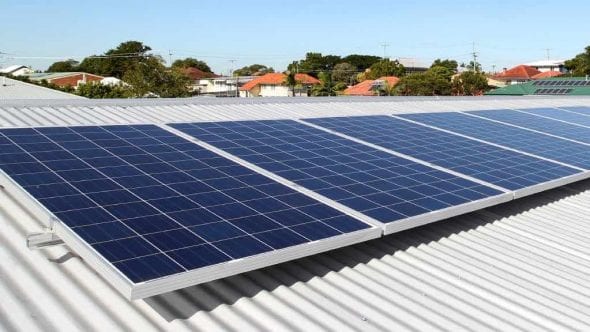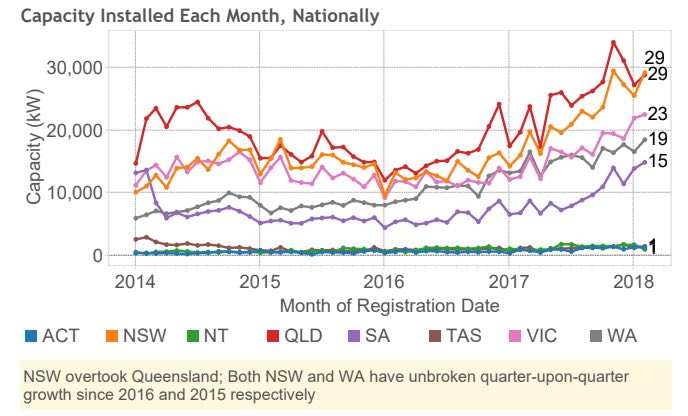The state of Queensland broke through the 2GW (gigawatt) level for rooftop solar installations in February, although it was overtaken for the first time in several years by New South Wales as the biggest market for installations.
Queensland added 28.874MW of rooftop solar in February, taking its cumulative total of 2.016GW, according to data from industry statistician SunWiz.
NSW is the second ranked state in terms of total deployment, with 1.47GW, but in the month of February pipped Queensland as the large market for the month with installations of 29.22MW.
As we reported on Thursday last week, Australia installed 118MW in total in February, confirming a super-fast start to the year that analysts say will almost certainly better the record 1057MW installed in 2017.
“Following a best-ever January, (this latest result) means we’re off to our fastest ever start to the year,” says SunWiz director Warwick Johnston.
The surge in installations is being driven by households in the first two months of the year – likely driven by a combination of a jump in prices from grid-based power (up around 20 per cent), and continuing falls in the price of solar modules (down 10 per cent in 12 months).
Also, more households are interested in battery storage, although most appear to be holding off installations until they see a further fall in battery prices.
This is further reinforced by the growth in installations in the 6-10kW size – suggesting that homes are seeking to put as much solar on their roofs as possible as they contemplate battery storage, or possibly electric vehicles.
Most states are experiencing growth of between 50 per cent and more than 100 per cent in the first two months of the year, over the same period a year ago.
But Queensland is the only state not to post record sales for the first two moths (installations in early 2013 were stronger, when the states generous feed-in-tariffs were about to come to an end.
Victoria installed 22.5MW in the latest month, Western Australia installed 18.5MW – its highest ever for a single month, South Australia 14.9MW, while Tasmania, the ACT and the Northern Territory installed 3.7MW between them.
This article was originally published on RenewEconomy’s sister site, One Step Off The Grid, which focuses on customer experience with distributed generation. To sign up to One Step’s free weekly newsletter, please click here.








